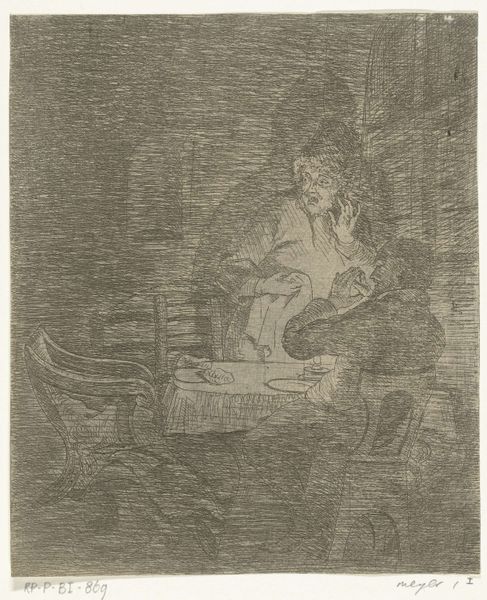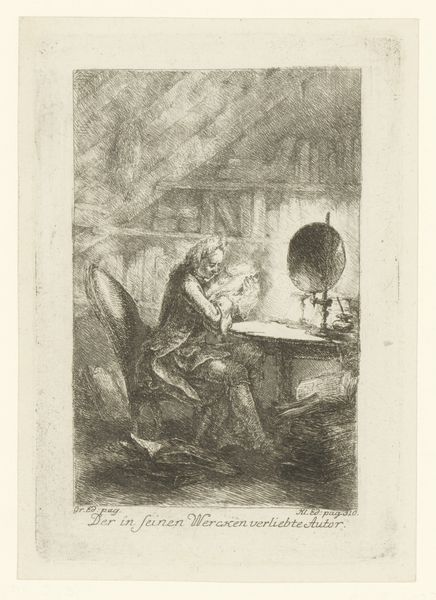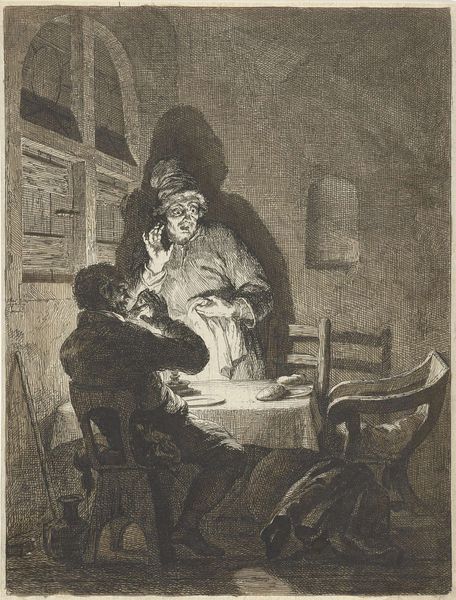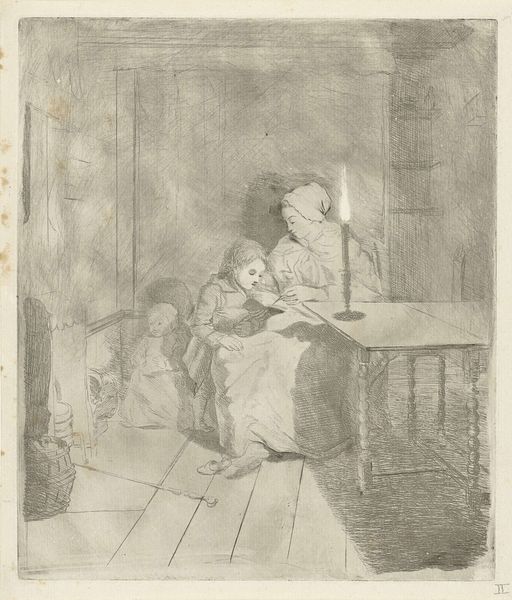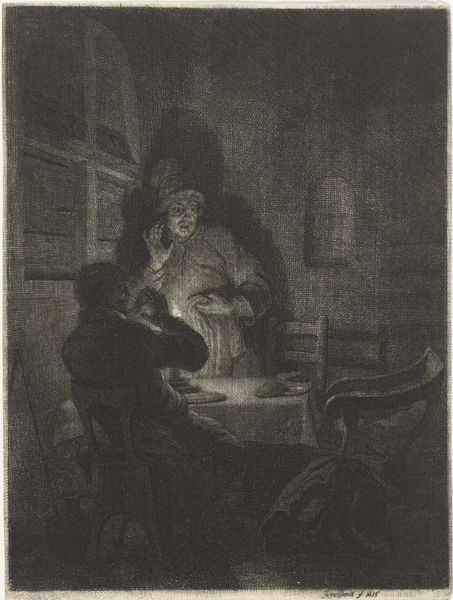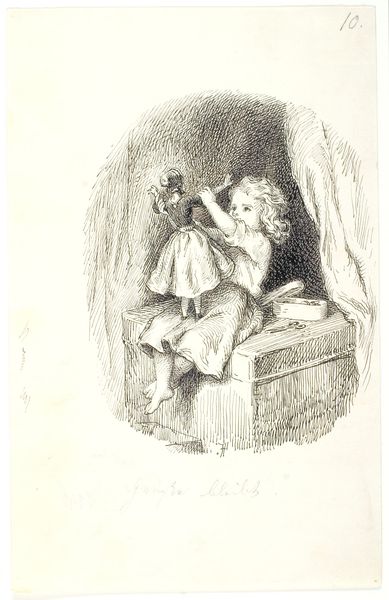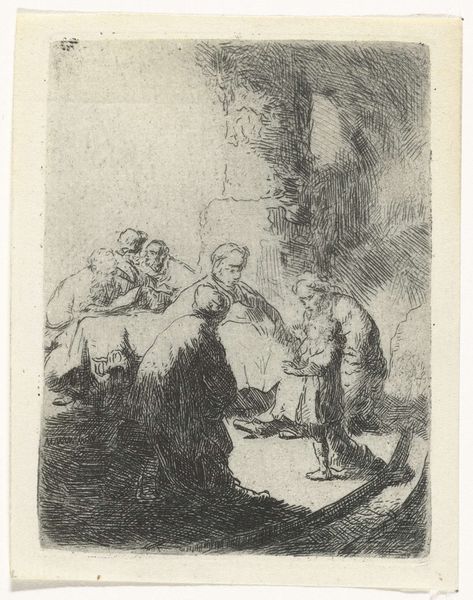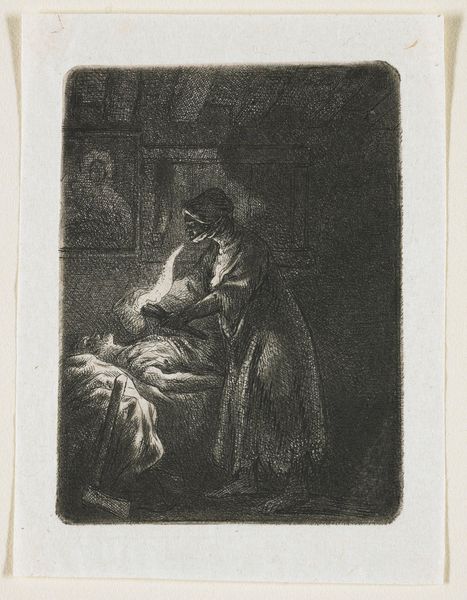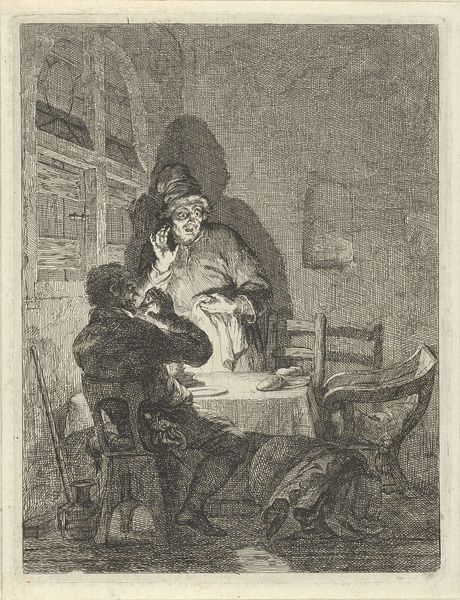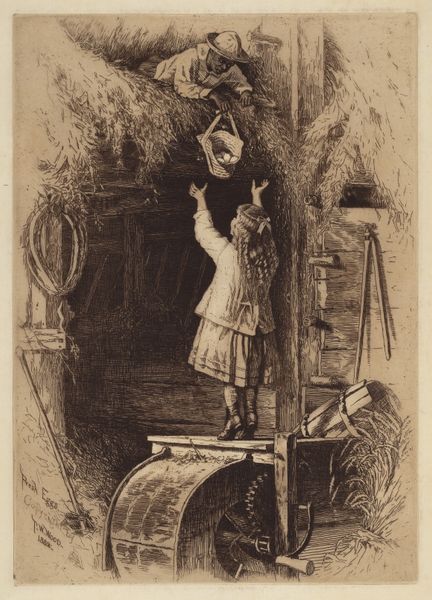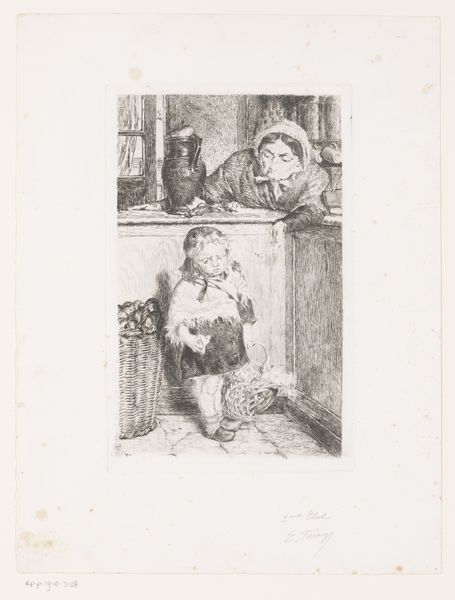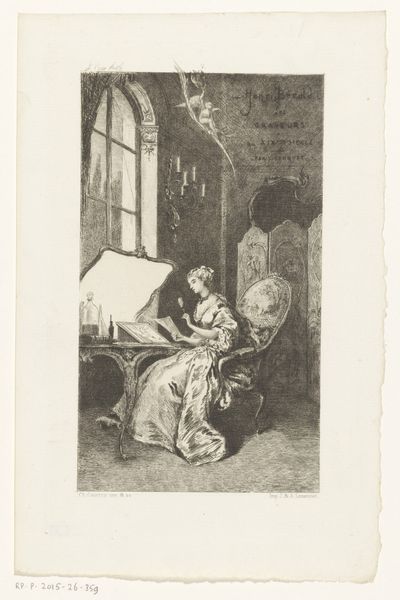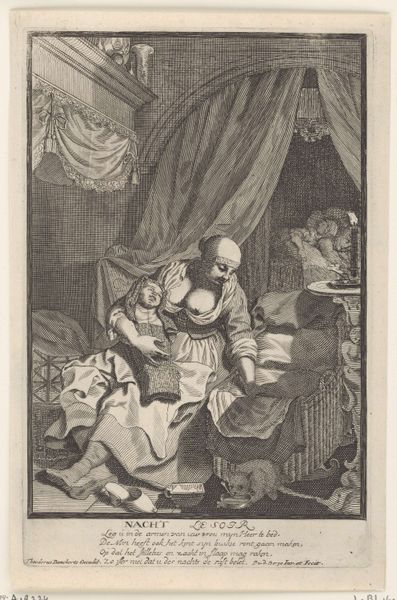
Christus verdwijnt voor ogen van twee leerlingen tijdens maaltijd in Emmaus 1821 - 1879
0:00
0:00
print, etching
#
narrative-art
# print
#
etching
#
old engraving style
#
genre-painting
#
realism
Dimensions: height 159 mm, width 133 mm
Copyright: Rijks Museum: Open Domain
Curator: Here we have an etching titled "Christus verdwijnt voor ogen van twee leerlingen tijdens maaltijd in Emmaus," depicting Christ disappearing before two disciples during their meal at Emmaus, dating from 1821-1879. Editor: The moment is charged. The coarse lines feel hasty, as though trying to capture a fleeting instance, and that looming figure, probably Peter, adds a wonderful sense of dramatic weight. It almost vibrates with spiritual tension. Curator: The scene draws from Luke's Gospel. This is the pivotal point of revelation, deeply connected to the breaking of bread, the sharing of a meal. That shared meal becomes a symbolic space, doesn't it? A potent symbol of community and divine presence made accessible in mundane, domestic life. Editor: The medium supports that really well. As a print, it would have allowed for wider circulation than painting or sculpture might. This scene, imbued with spiritual significance, literally becomes reproducible, and portable—like sharing a loaf of bread at countless meals. Curator: Indeed, consider the gesture, her open palm… an archetypal gesture of surprise or revelation, reaching towards the vanishing Christ. It’s not just the physical absence of Christ, but the dawning understanding of who he truly was. That gesture echoes through centuries of religious art. Editor: Yet, in a medium like etching, we're dealing with labor – the deliberate, almost repetitive mark-making that builds form. Someone physically crafted each line with painstaking care. How might that tangible effort mirror the commitment required for genuine spiritual understanding? Curator: I like how you relate process to spiritual journey, from dark to light. That's how iconography works too; images teach us about this connection. It's about cultural memory; this moment and how its echoes live through imagery. Editor: Absolutely. This print underscores how belief takes material form, whether in labor or the circulated image, making it visible, making it shareable. Curator: A wonderful note on which to end, this convergence of faith and form. Editor: A convergence made visible, indeed.
Comments
No comments
Be the first to comment and join the conversation on the ultimate creative platform.
